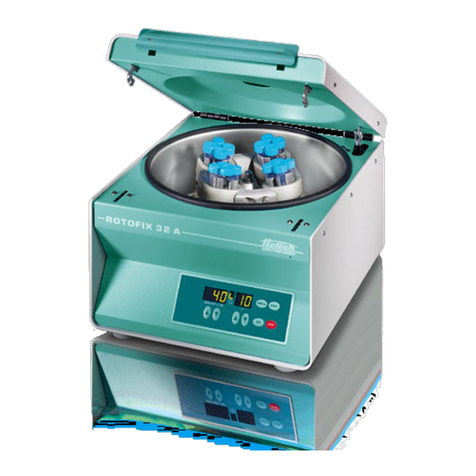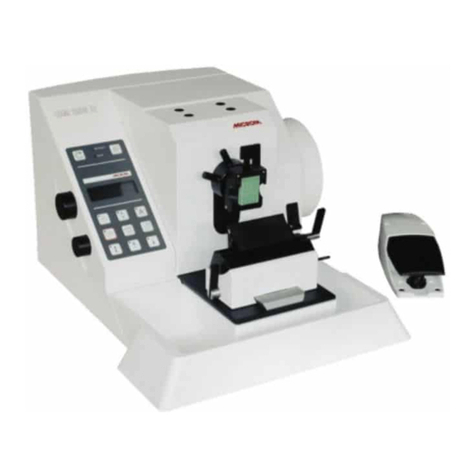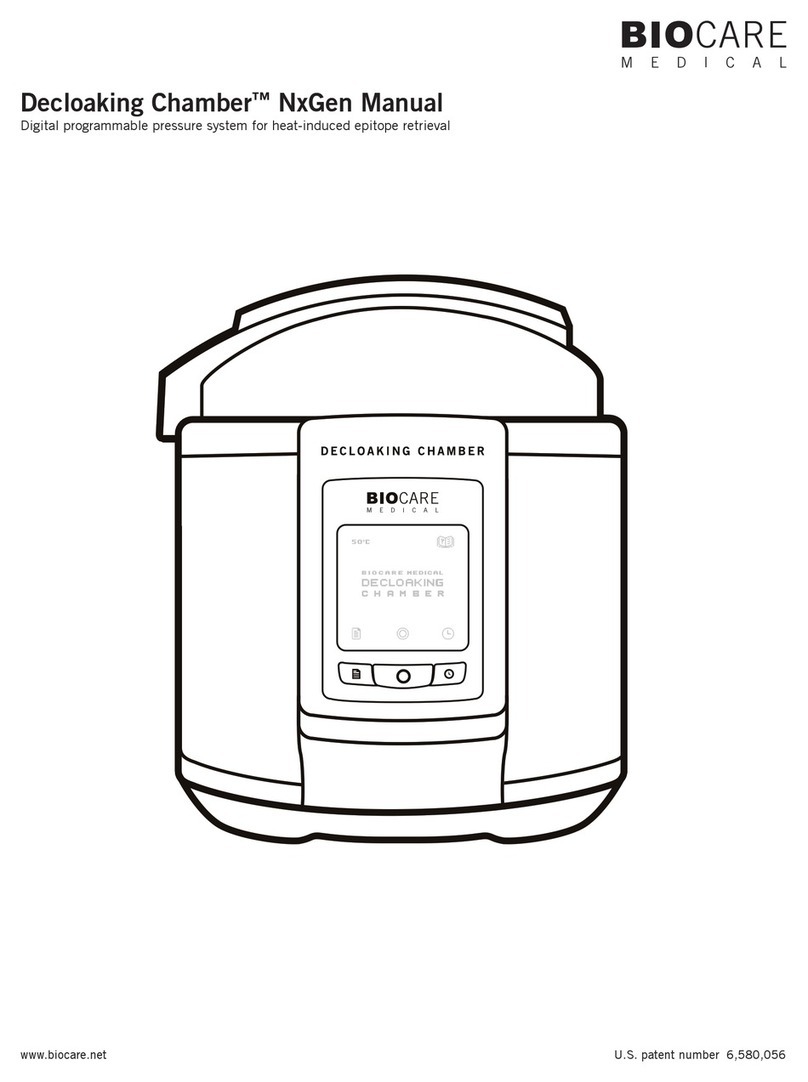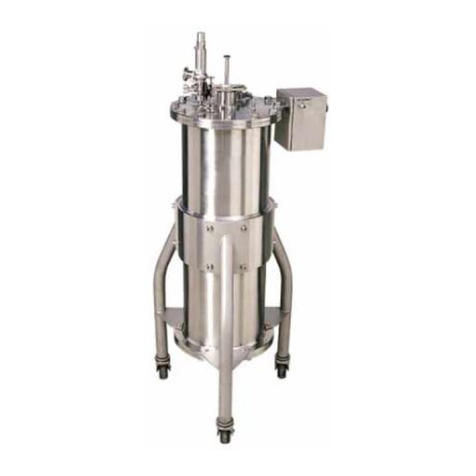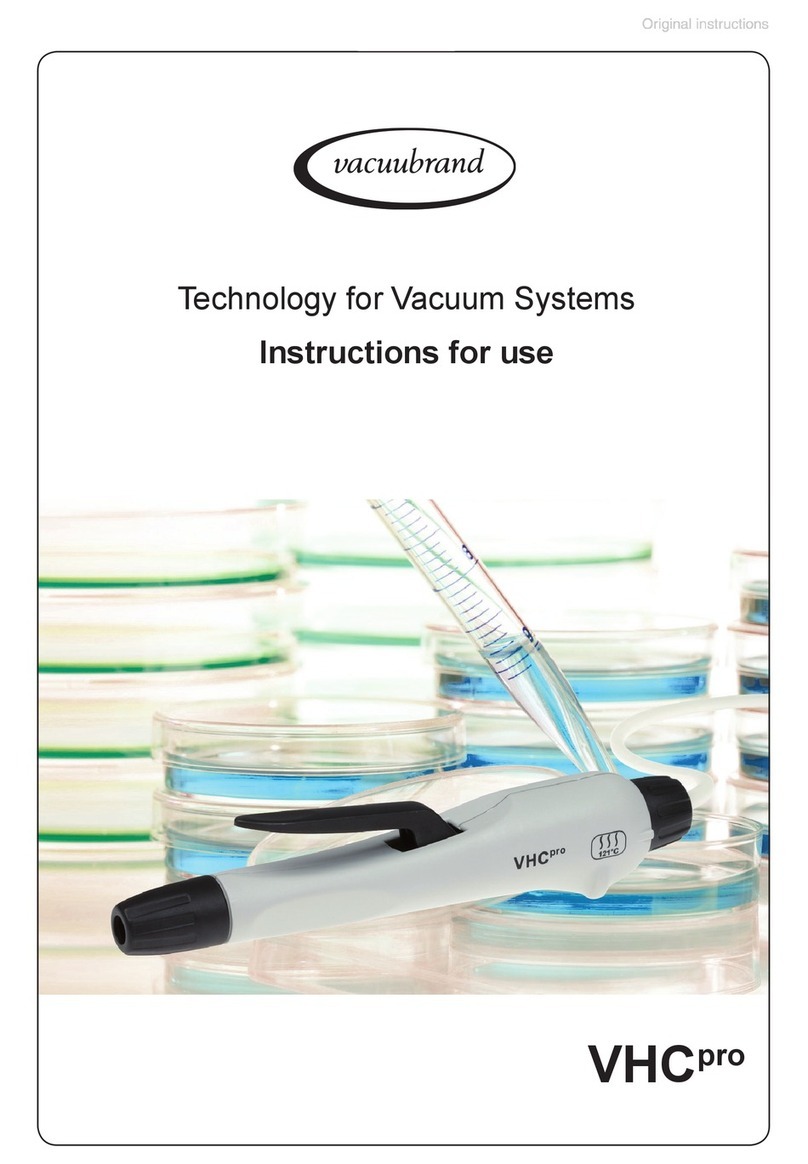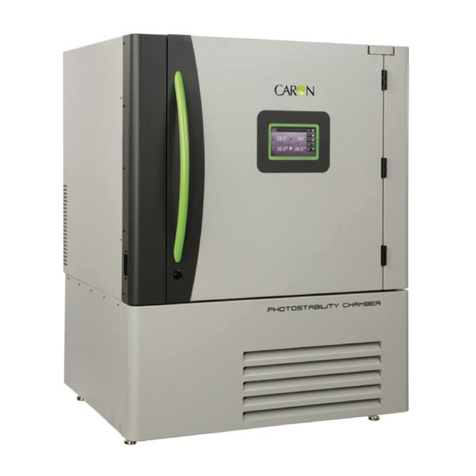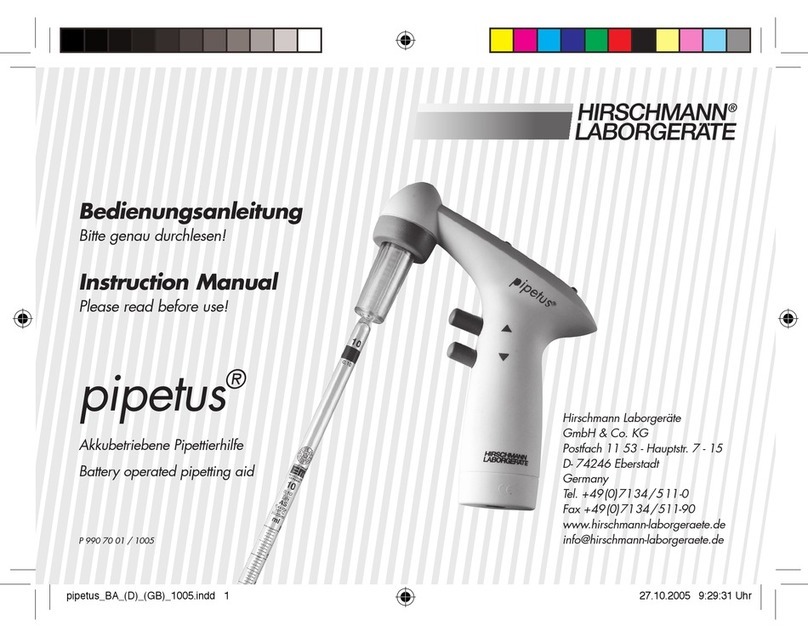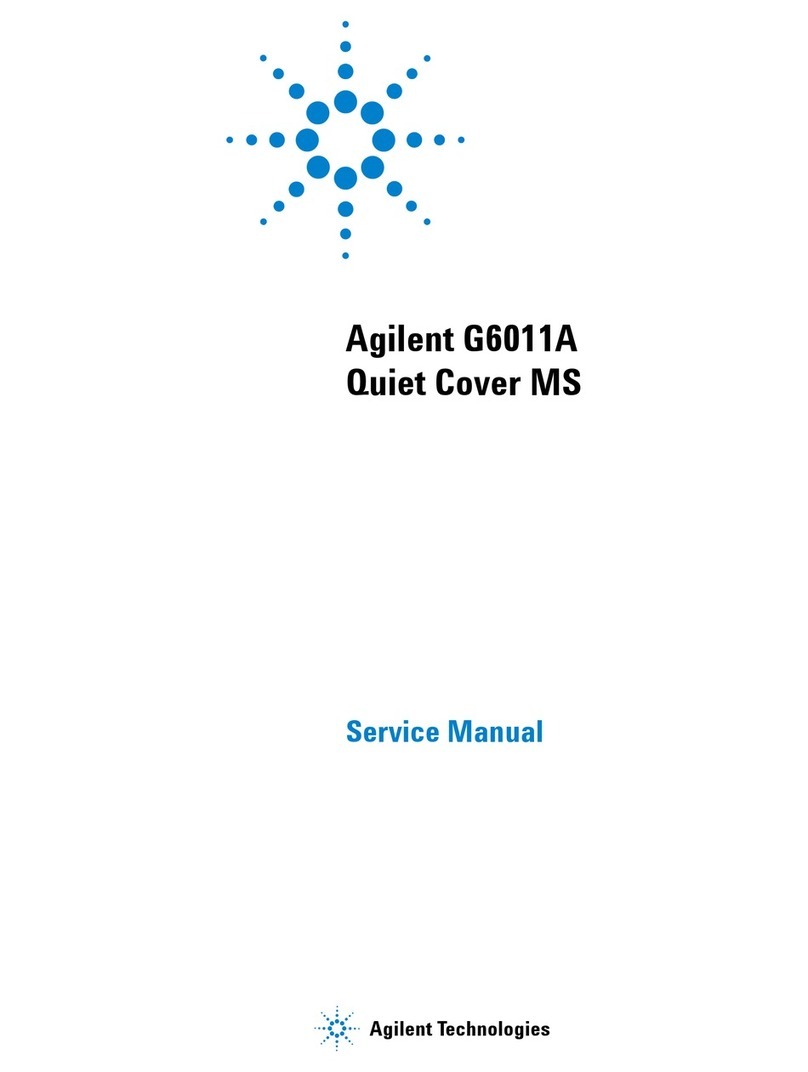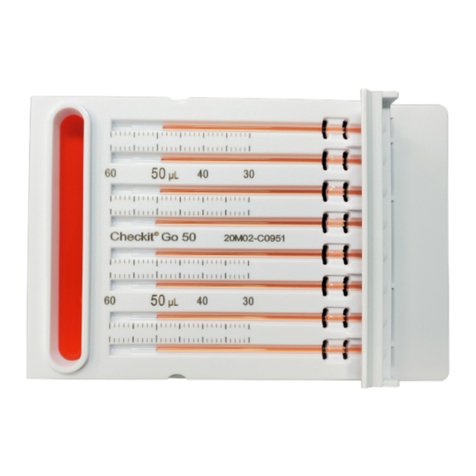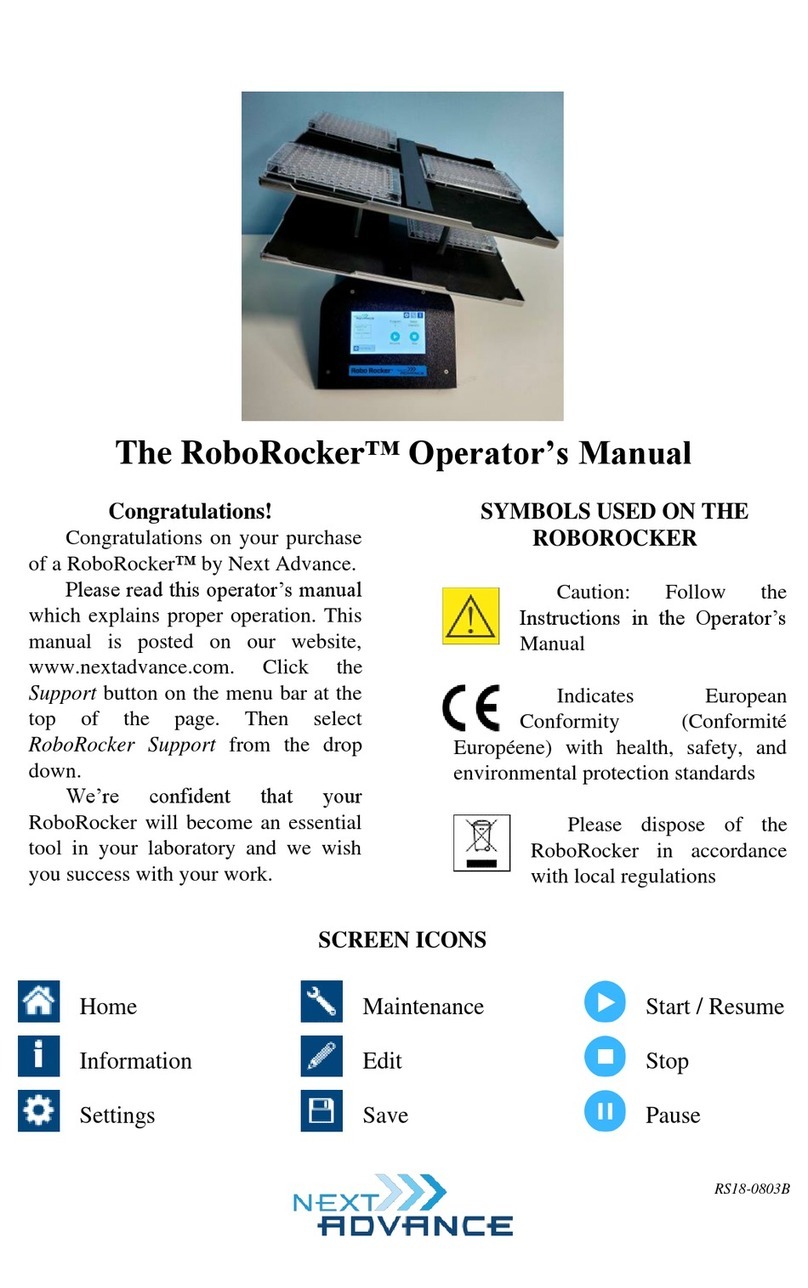
® 50
4
up. After 2 minutes the second LED
light by the number 2 will light up. And
so on. At the setting shown above, after
12 minutes, the Bullet Blender 50 will
stop. The BB50-
light that comes on when the internal
compartment of the instrument is
refrigerated. On the BB50-DX model,
ambient air is circulating through the
inside of the instrument during
operation and for 30 seconds after the
cycle is complete.
The BB50-AU unit contains a dry
ice cooling compartment. To use, fill
the dry ice cooling compartment with at
least 2 lbs of dry ice. Always use
cryogenic gloves when handling dry
ice. Do not use the inner portion of the
dry ice cooling compartment to
transport the ice. Do not fill the dry ice
cooling compartment with water ice.
Make sure that the dry ice cooling
compartment lid is properly sealed. To
pre-cool the instrument, after filling the
compartment with dry ice, run the
instrument for 5 minutes.
PROTOCOLS AND SAMPLE
SETTINGS
The following ratio should be used
as a guideline for determining the
amount of beads and buffer to use given
a certain sample size - 1 volume/mass
of tissue: 1 volume of beads: 2 volumes
of buffer. For more specific information
regarding the use of various beads as
well as specific protocol information,
please refer to our website:
www.nextadvance.com.
For 50 mL tubes, do not operate
with more than 3.5g of sample, or a
total of 20mL of buffer, tissue, and
beads (per tube).
Cutting the tissue into smaller
pieces will generally yield better
results. Tissue with a high aspect ratio
(long, thin strips) will homogenize
better than tissue that is round or cubic.
Do not operate the Bullet Blender
50 using the same tubes for more than
30 minutes.
Protocols for many types of
samples are posted on our website, at
www.protocols.nextadvance.com
Notes:
Use Axygen® brand or Corning®
brand polypropylene, plug seal cap,
skirted (self-standing) 50 mL tubes. If
there is a different brand of 50 mL tube
you would like to use, please contact us
at support@nextadvance.com. There
may be some discoloration of the
sleeves and of the tubes after
homogenization. This is normal and a
by product of the workings of the
Bullet Blender 50, which is designed to
impact the tubes with as much energy
as possible.
CLEANING
If you wish to clean your Bullet
Blender, com. clean the outside of the
unit only with mild detergent, water and
a soft cloth. Under normal conditions,
the Bullet Blender 50 should never need
to be disassembled for cleaning. In the
case of a large spill, please contact Next
Advance at www.nextadvance.com. Do
DOMINIQUE DUTSCHER SAS








